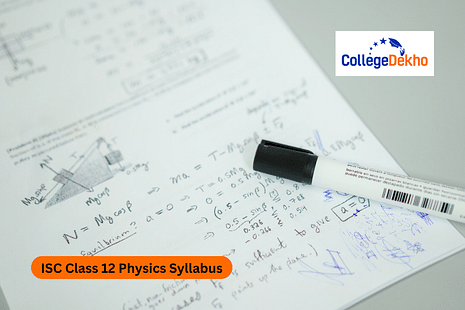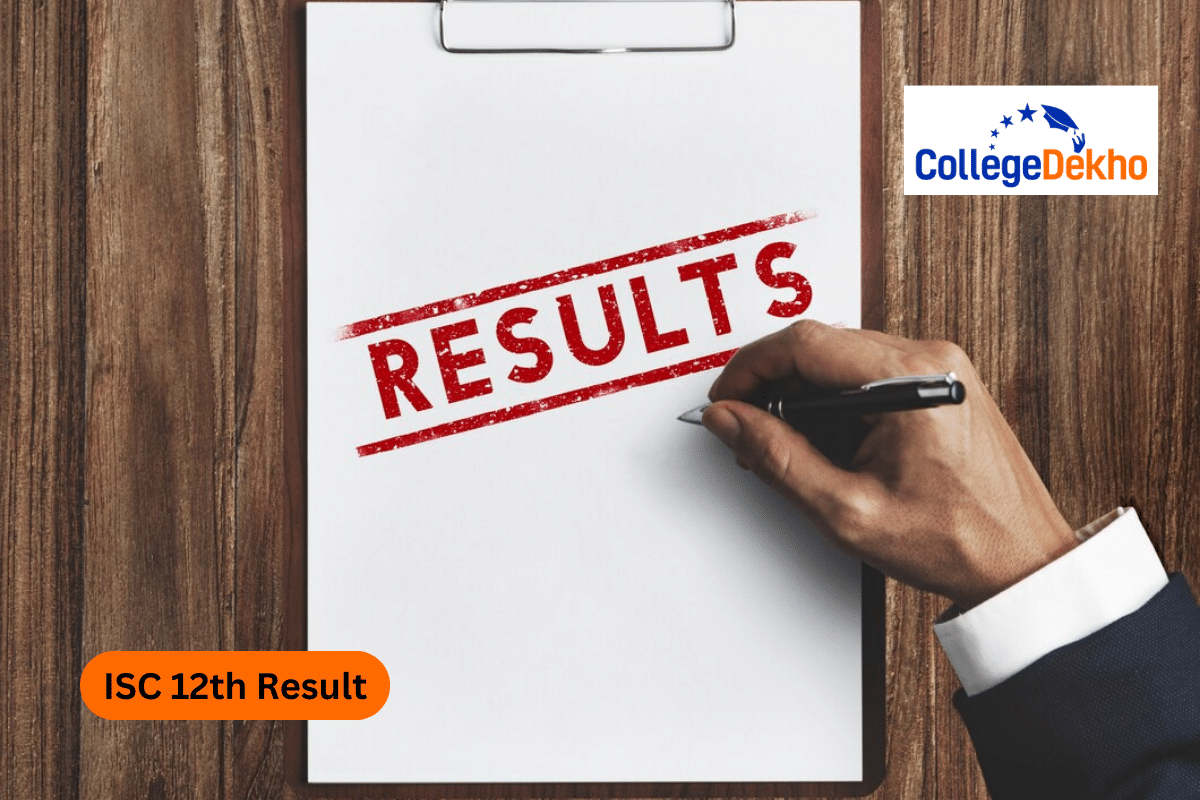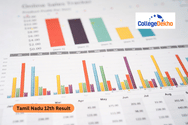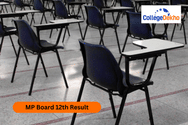

Never Miss an Exam Update
About ISC Class 12 Physics Syllabus 2025-26
CISCE has recently revised the ISC Class 12 Physics Syllabus 2025-26. The latest syllabus PDF is now available on the official website of cisce.org to be downloaded by the students. A total of 9 units are covered in the curriculum. With the help of the syllabus, students can get a clear understanding of the assessment types, evaluation scheme, topics and chapters to be covered, and the chapter-wise marks distribution. Moreover, the curriculum is designed to enhance effective communication skills, offer extensive practical exposure to encourage hands-on learning, and ensure the overall holistic development of students. Check the complete syllabus below. The units covered are Electrostatics, Current Electricity, Magnetic Effects of Current and Magnetism, Electromagnetic Induction and Alternating Currents, Electromagnetic Waves, Optics, Dual Nature of Radiation and Matter, Atoms and Nuclei, and Electronic Devices. The theory paper will be conducted for 70 marks and the practical session will be conducted for 30 marks. Students can use the ISC Class 12 Physics Sample Paper for revision.
The unit with the highest weightage is Optics. Students must give more importance to the units carrying the most weightage so that they can retain more marks in the board exam. Check out more information about the ISC Class 12 Physics Syllabus 2025-26 here:
Also Read: ISC 12th Time Table
ISC Class 12 Physics Syllabus 2025-26 Download PDF
The PDF of the ISC Class 12 Physics Syllabus 2025-26 is now available on the official website of CISCE. Students can download the PDF by clicking on the direct link given below:
ISC Class 12 Physics Syllabus 2025-26 Course Structure
A few changes have been made by CISCE in the course structure for Physics. Students can refer to the revised ISC Class 12 Physics Syllabus 2025-26 from the table given below and use it to prepare for the board exams:
Unit Name | Marks |
|---|---|
Electrostatics | 14 |
Current Electricity | |
Magnetic Effects of Current and Magnetism | 16 |
Electromagnetic Induction and Alternating Currents | |
Electromagnetic Waves | 2 |
Optics | 18 |
Dual Nature of Radiation and Matter | 7 |
Atoms and Nuclei | 6 |
Electronic Devices | 7 |
Total | 70 |
Also Read: ISC Class 12 Physics Previous Year Question Paper
ISC Class 12 Physics Syllabus 2025-26 Units
A total of 9 units are included in the curriculum according to the revised syllabus presented on the official website of CISCE. Students can refer to the unit-wise syllabus from the table given below:
Unit Name | Topics |
|---|---|
Electrostatics | (i) Electric Charges and Fields- Electric charges; conservation and quantisation of charge, Coulomb's law; superposition principle and continuous charge distribution. Electric field, electric field due to a point charge, electric field lines, electric dipole, electric field due to a dipole, torque on a dipole in uniform electric field, Electric flux, Gauss’s theorem in Electrostatics and its applications to find field due to infinitely long straight wire, uniformly charged infinite plane sheet and uniformly charged thin spherical shell (ii) Electrostatic Potential, Potential Energy and Capacitance- Electric potential, potential difference, electric potential due to a point charge, a dipole and system of charges; equipotential surfaces, electrical potential energy of a system of two point charges and of electric dipole in an electrostatic field. Conductors and insulators, free charges and bound charges inside a conductor, Dielectrics and electric polarisation, capacitors and capacitance, combination of capacitors in series and in parallel, Capacitance of a parallel plate capacitor, energy stored in a capacitor (No derivation, formulae only). |
Current Electricity | Mechanism of flow of current in conductors. Mobility, drift velocity and its relation with electric current; Ohm's law and its proof, resistance and resistivity and their relation to drift velocity of electrons; V-I characteristics (linear and non-linear), electrical energy and power, electrical resistivity and conductivity, temperature dependence of resistance and resistivity. Internal resistance of a cell, potential difference and emf of a cell, combination of cells in series and in parallel, Kirchhoff's laws and simple applications, Wheatstone bridge, metre bridge. Potentiometer - principle and its applications to measure potential difference, to compare emf of two cells, to measure internal resistance of a cell |
Magnetic Effects of Current and Magnetism | (i) Moving charges and magnetism- Concept of magnetic field, Oersted's experiment, Biot - Savart law and its application, Ampere's Circuital law and its applications to infinitely long straight wire, straight solenoids (only qualitative treatment), Force on a moving charge in uniform magnetic and electric fields, Force on a current-carrying conductor in a uniform magnetic field, force between two parallel current-carrying conductors- definition of ampere, torque experienced by a current loop in uniform magnetic field; moving coil galvanometer -its sensitivity, Conversion of galvanometer into an ammeter and a voltmeter (ii) Magnetism and Matter- A current loop as a magnetic dipole, its magnetic dipole moment, magnetic dipole moment of a revolving electron, magnetic field intensity due to a magnetic dipole (bar magnet) on the axial line and equatorial line, torque on a magnetic dipole (bar magnet) in a uniform magnetic field; bar magnet as an equivalent solenoid, magnetic field lines; earth's magnetic field and magnetic elements. Diamagnetic, paramagnetic, and ferromagnetic substances, with examples. Electromagnets and factors affecting their strengths, permanent magnets. |
Electromagnetic Induction and Alternating Currents | (i) Electromagnetic Induction- Faraday's laws, induced emf and current, Lenz's Law, eddy currents, Self-induction and mutual induction, Transformer (ii) Alternating Current- Peak value, mean value, and RMS value of alternating current/voltage; their relation in sinusoidal case; reactance and impedance, LC oscillations (qualitative treatment only), LCR series circuit, resonance; power in AC circuits, wattles current, AC generator |
Electromagnetic Waves | The basic idea of displacement current, Electromagnetic waves, their characteristics, their transverse nature (qualitative ideas only), Complete electromagnetic spectrum starting from radio waves to gamma rays: elementary facts of electromagnetic waves and their uses. |
Optics | (i) Ray Optics and Optical Instrument- Ray Optics: Reflection of light by spherical mirrors, mirror formula, refraction of light at plane surfaces, total internal reflection and its applications, optical fibers, refraction at spherical surfaces, lenses, thin lens formula, lensmaker's formula, magnification, power of a lens, combination of thin lenses in contact, combination of a lens and a mirror, refraction and dispersion of light through a prism, Optical instruments: Microscopes and astronomical telescopes (reflecting and refracting) and their magnifying powers (ii) Wave Optics- Wave front and Huygen's principle, Proof of laws of reflection and refraction using Huygen's principle, Interference, Young's double slit experiment and expression for fringe width(β), coherent sources and sustained interference of light, Fraunhofer diffraction due to a single slit, width of central maximum. |
Dual Nature of Radiation and Matter | Wave-particle duality; photoelectric effect, Hertz and Lenard's observations; Einstein's photoelectric equation- particle nature of light. Matter waves - wave nature of particles, de-Broglie relation; conclusion from Davisson-Germer experiment. |
Atoms and Nuclei | (i) Atoms- Alpha-particles scattering experiment; Rutherford's atomic model; Bohr’s atomic model, energy levels, hydrogen spectrum. (ii) Nuclei- Composition and size of nucleus, Mass-energy relation, mass defect; binding energy per nucleon and its variation with mass number; Nuclear reactions, nuclear fission, and nuclear fusion. |
Electronic Devices | Semiconductor Electronics: Materials, Devices and Simple Circuits, Energy bands in conductors, semiconductors, and insulators (qualitative ideas only). Intrinsic and extrinsic semiconductors, P and n-type, p-n junction, Semiconductor diode: I-V characteristics in forward and reverse bias, diode as a rectifier; Special types of junction diodes: LED, photodiode, solar cell and Zener diode and its characteristics, Zener diode as a voltage regulator. |
ISC Class 12 Physics Syllabus 2025-26 For Internal Assessment
The internal assessment for physics will be conducted for 30 marks. Students can refer to the exam pattern which will be followed for the practical session from the table given below:
Parameters | Weightage | |
|---|---|---|
Practical |
The experiments for laboratory work and practical examinations are mostly from two groups:
(i) experiments based on ray optics and (ii) experiments based on current electricity. The main skill required in group (i) is to remove parallax between a needle and the real image of another needle. In group (ii), understanding circuit diagram and making connections strictly following the given diagram is very important. Polarity of cells and meters, their range, zero error, least count, etc., should be taken care of. A graph is a convenient and effective way of representing results of measurement. It is an important part of the experiment. There will be one graph in the Practical question paper. Candidates are advised to read the question paper carefully and do the work according to the instructions given in the question paper. Generally they are not expected to write the procedure of the experiment, formulae, precautions, or draw the figures, circuit diagrams, etc. Observations should be recorded in a tabular form. | 15 marks |
Project Work |
The Project work is to be assessed by a Visiting Examiner appointed locally and approved by the Council. All candidates will be required to do one project involving some physics-related topic/s under the guidance and regular supervision of the Physics teacher. Candidates should undertake any one of the following types of projects:
• Theoretical project • Working Model • Investigatory project (by experimenting under supervision of a teacher). Candidates are to prepare a technical report including title, abstract, some theoretical discussion, experimental setup, observations with tables of data collected, graph/chart (if any), analysis and discussion of results, deductions, conclusion, etc. The teacher should approve the draft, before it is finalised. The report should be kept simple, but neat. Teachers may assign or students may choose any one project of their choice. | 10 marks |
Practical File | The Visiting Examiner is required to assess the candidates on the basis of the Physics practical file maintained by them during the academic year. | 5 marks |
The latest ISC Class 12 Physics Syllabus 2025-26 is listed on the official website of CISCE. Students must have detailed knowledge of the syllabus to start the preparations for the board exam. They can use the syllabus to prepare a study plan.
Are you feeling lost and unsure about what career path to take after completing 12th standard?
Say goodbye to confusion and hello to a bright future!

FAQs
ISC Class 12 Physics Syllabus 2024-25 is uploaded on the official website of CISCE at cisce.org. Students need to click on the option called “ISC Examination” to download the syllabus according to the academic year 2025.
Not many changes are recorded in the ISC Class 12 Physics Syllabus 2024-25 however the weightage of some units has changed. Students can download the revised syllabus by visiting the official website of CISCE.
The units covered in the ISC Class 12 Physics Syllabus 2024-25 are Electrostatics, Current Electricity, Magnetic Effects of Current and Magnetism, Electromagnetic Induction and Alternating Currents, Electromagnetic Waves, Optics, Dual Nature of Radiation and Matter, Atoms and Nuclei, and Electronic Devices.
Students must start the preparations for the board exams right after the release of the syllabus. At least, 6 months are required by the students to complete the ISC Class 12 Physics Syllabus 2024-25 thoroughly.
The most important chapter in ISC Class 12 Physics Syllabus 2024-25 is Optics. 18 marks are allotted to this chapter. Magnetic Effects of Current and Magnetism and Electromagnetic Induction and Alternating Currents are the second most important chapters.
Was this article helpful?

















